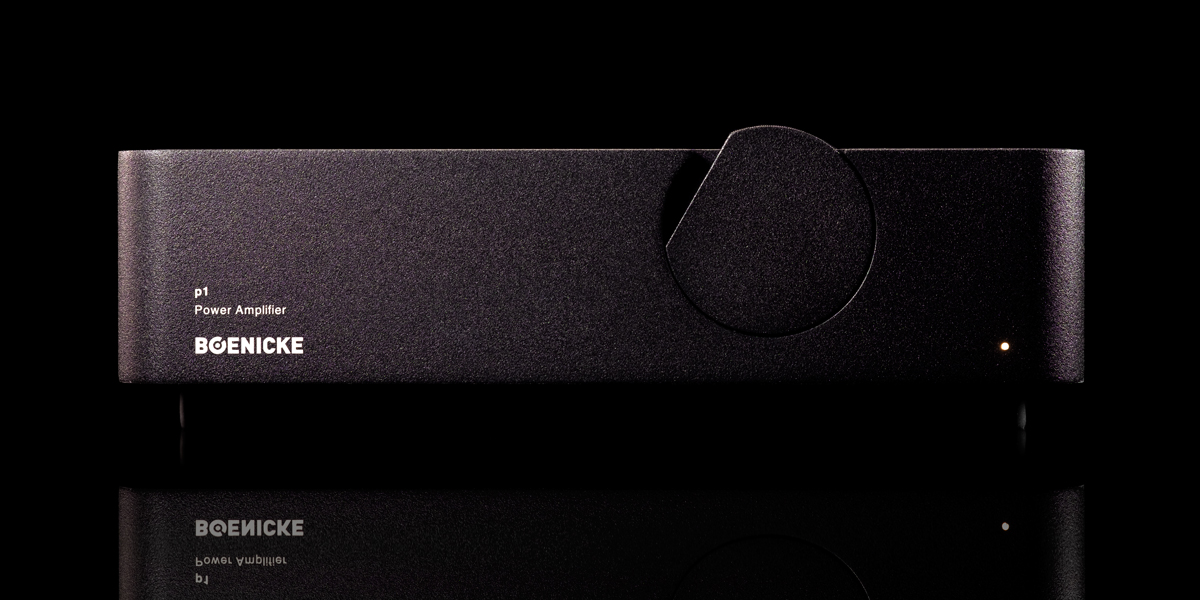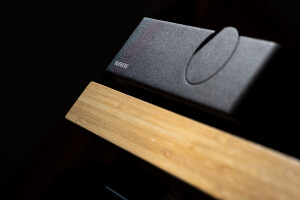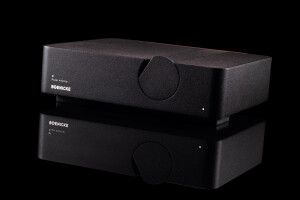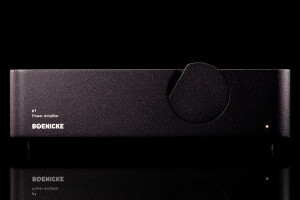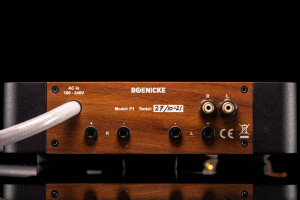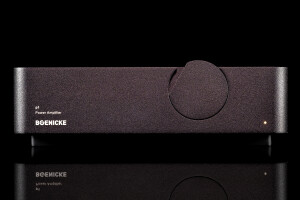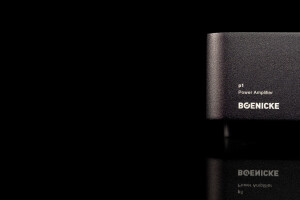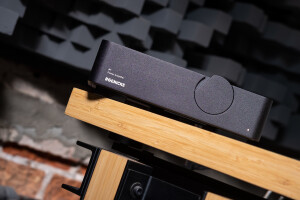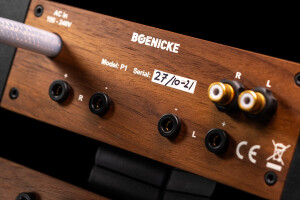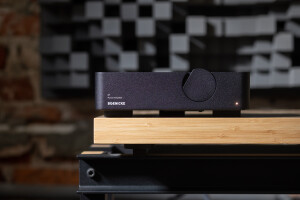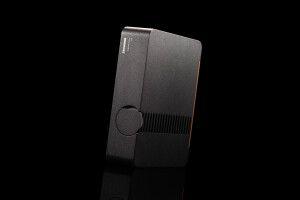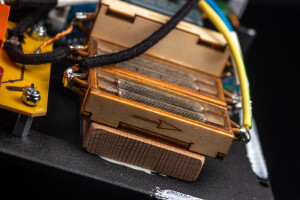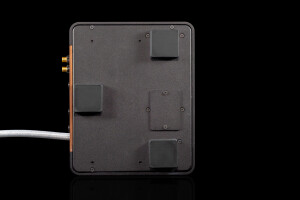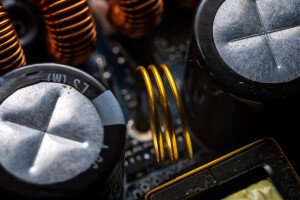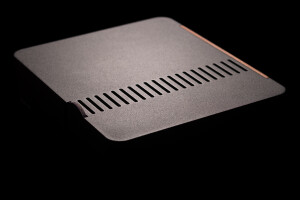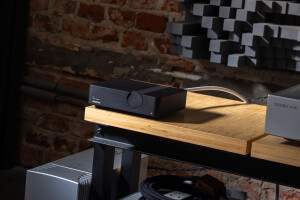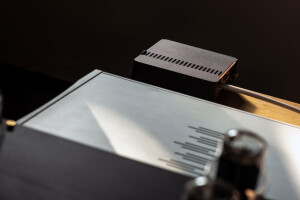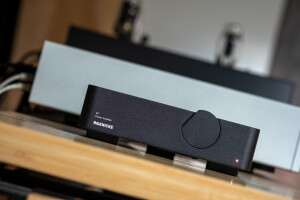Boenicke Audio p1 is Sven Boenicke’s first commercially available electronic kit. This tiny power amp sells for less than most his other products and now it’s time to find out how it performs. Enjoy!
Swiss cardio
Boenicke Audio’s track record here at HiFiknights.com includes four speaker reviews (W5, W8, W11 SE and W11 SE+), three cable stories (S3, IC3 CG and M3), one about a passive distributor box (Power Gate) and the most recent about a signal emitter (ComDev). This nine-strong coverage puts Sven Boenicke’s company right next to LessLoss and above any other audio house introduced at this site, while its archive penned by Srajan at 6moons.com is as large. Although the Swiss designer has been known primarily for speakers that still are his bread and butter, his current lineup doesn’t quite communicate that, or at least I don’t think it does. Today one can find there multiple products meant to support that core. That’s hardly a surprise. Most manufacturers expand their rosters to complement what they already have once their position within the industry is secure. Sven did that too, albeit in a particularly teasing style.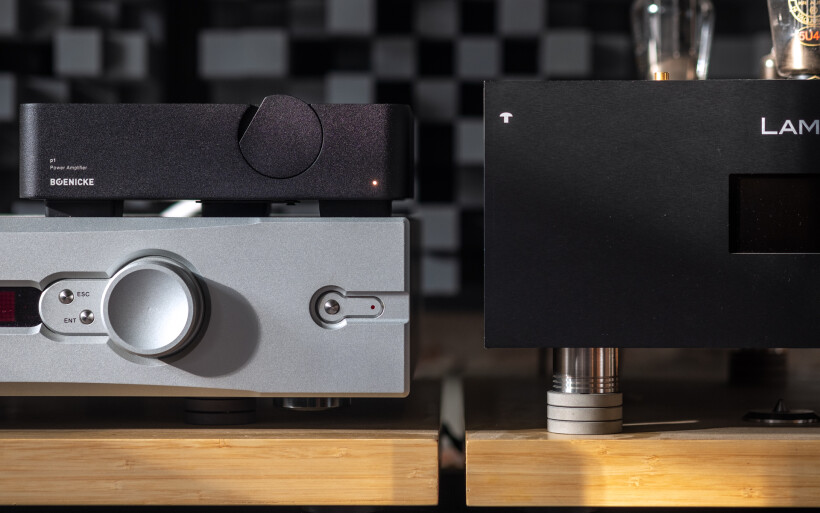 I can’t remember how many Boenicke Audio rooms I’ve visited over the years. More than a dozen is my conservative estimation. Alongside Sven’s usual suspects – speakers, cables and accessories – I often saw there his electronic designs that seemed finished fully operational efforts. Alas, they weren’t and their maker was in no hurry to turn them into commercially available goods for everyone with coin to spare. Each time we met in Warsaw or Munich, I naturally asked the Swiss designer about his plans to eventually release any of his electronic kit. The man always remained unfazed and had the same answer ready. Soon. Patience is a virtue, no? Still, as an owner of two his speaker sets I was curious about hardware obviously tailored for them. I imagine that many his customers were as well, so he must’ve heard questions similar to mine countless times already. After getting to know Boenicke Audio’s founder a bit better I finally understood why he took his time with these projects. Audio events were in fact testing grounds for them, where he could gather feedback from visitors, observe their reactions and move from there one step at a time.
I can’t remember how many Boenicke Audio rooms I’ve visited over the years. More than a dozen is my conservative estimation. Alongside Sven’s usual suspects – speakers, cables and accessories – I often saw there his electronic designs that seemed finished fully operational efforts. Alas, they weren’t and their maker was in no hurry to turn them into commercially available goods for everyone with coin to spare. Each time we met in Warsaw or Munich, I naturally asked the Swiss designer about his plans to eventually release any of his electronic kit. The man always remained unfazed and had the same answer ready. Soon. Patience is a virtue, no? Still, as an owner of two his speaker sets I was curious about hardware obviously tailored for them. I imagine that many his customers were as well, so he must’ve heard questions similar to mine countless times already. After getting to know Boenicke Audio’s founder a bit better I finally understood why he took his time with these projects. Audio events were in fact testing grounds for them, where he could gather feedback from visitors, observe their reactions and move from there one step at a time.
It’s no secrecy that all Boenicke Audio products are in one way or another infused with outsourced tech. Sven relies on experts such as Louis Motek of LessLoss, Serge Schmidlin of Audio Consulting, Volker Bajorat of Clockwork Audio and many more. In this context knowing just the right people for the job is essential. The Swiss’ knack for targeting exotic components that net stout results even more so. Although he’s particularly known for that, his electronic designs are destined to emerge at a rather slow pace because he constantly alters them, personally assembles each and still has a successful speaker house to run, which takes a lot of his time. That aside, the current Boenicke Audio electronic branch comprises of an integrated amp named i2, preamps v1 and v3, DACs c1 and C3 and power amps p1 and p3. The higher their number is, the larger and costlier these machines are. Many are radical ambitious affairs built upon battery PSUs, transformer volume control and niche unorthodox circuits generously sprinkled with Sven’s usual passive tweaks. Most these products still hold the work-in-progress status and should be available as soon as they’re done, which might take a while. For now only Boenicke Audio’s flagship v3 pre and entry-level p1 power amp are available. Srajan’s story about the latter already explained in detail what it was and recently I got the chance to sample its harmonized version. Considering all the above, well, of course I was game.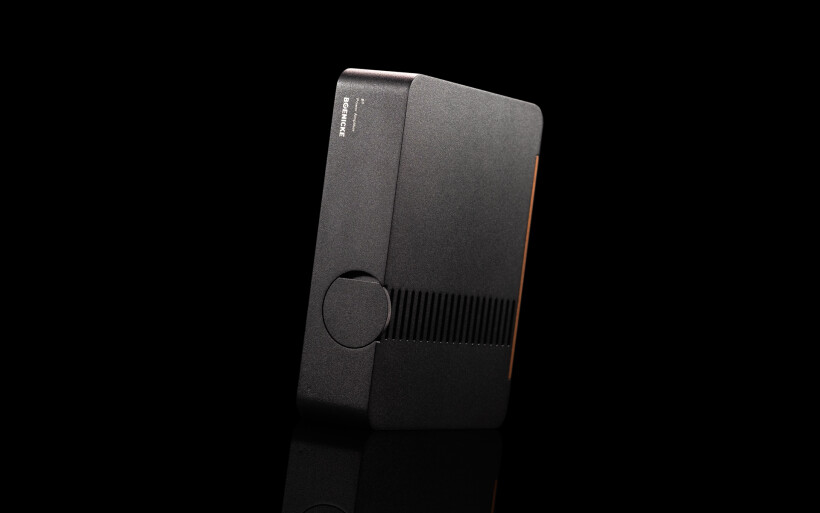 The Boenicke Audio p1 loaner was delivered inside the same cardboard packaging the manufacturer uses to ship W5 monitors. The former box had different internal braces to properly secure the key ingredient inside a thick woolen bag. No extras were provided, but given the p1’s type none were mandatory. It’s a power amp after all, so a product very simple to use. Its exceptionally compact 75 x 202 x 230mm (H x D x W) footprint and 4.3kg mass are in the ballpark of AGD Productions Tempo amp recently reviewed here. The former also is a class D affair that packs 300wpc into 8Ω, draws 11W in idle, is 100-240V compliant and its input impedance is 11.5kΩ. These are all the specs we get this time around. Today’s amp can be had either powder-coated black or anodized silver and sells for CHF 4’279/4’524 respectively with VAT included. Srajan’s non-harmonized silver p1 loaner was noticeably more affordable (CHF 2’428) and it’s fair to explain why. Half of the price difference covers the mysterious GreenHarmonia processing meant to improve performance and Sven is very fond of its efficacy. I haven’t got the faintest how much of an impact this method had on my unit’s behavior, but I imagine that this is yet another finding of his that does something. The remaining extra cost is the effect of dealer margins as Boenicke Audio p1 now is available via these channels too.
The Boenicke Audio p1 loaner was delivered inside the same cardboard packaging the manufacturer uses to ship W5 monitors. The former box had different internal braces to properly secure the key ingredient inside a thick woolen bag. No extras were provided, but given the p1’s type none were mandatory. It’s a power amp after all, so a product very simple to use. Its exceptionally compact 75 x 202 x 230mm (H x D x W) footprint and 4.3kg mass are in the ballpark of AGD Productions Tempo amp recently reviewed here. The former also is a class D affair that packs 300wpc into 8Ω, draws 11W in idle, is 100-240V compliant and its input impedance is 11.5kΩ. These are all the specs we get this time around. Today’s amp can be had either powder-coated black or anodized silver and sells for CHF 4’279/4’524 respectively with VAT included. Srajan’s non-harmonized silver p1 loaner was noticeably more affordable (CHF 2’428) and it’s fair to explain why. Half of the price difference covers the mysterious GreenHarmonia processing meant to improve performance and Sven is very fond of its efficacy. I haven’t got the faintest how much of an impact this method had on my unit’s behavior, but I imagine that this is yet another finding of his that does something. The remaining extra cost is the effect of dealer margins as Boenicke Audio p1 now is available via these channels too.
Switching amps are widely known for stout power output from tiny cost-effective enclosures that generate minimal heat. Those I’ve heard also were very solid performers of highly diversified sound profiles. If you’re fond of SET-like sound as much as high power output, investigate S.P.E.C. If it’s primarily quickness, resolution and openness you seek, AGD Productions has you covered. If you want something in the middle, Aavik’s address is the one. To my ears these audio houses cover pretty much the entire sonic gamut. Their class D machines I’ve sampled truly were geared for competing with class A/AB behemoths where it mattered most. They also ran cooler, occupied far less shelf space, were more powerful and nowhere near as wallet–intense as i.e. my reference hybrid mono towers. Moving on, Sven’s OEM circuit of choice for his p1 is by Powersoft and was already field-tested in his W13 floorstanders. The trick was in supporting that engine with the man’s usual additives to elevate his amp’s audible capabilities to a level he deemed satisfactory. That said, this switching heart extracted from its tiny enclosure inhabited by multiple exotic bits won’t sound the same. That’s the key takeaway here and nothing new per se. Aavik and S.P.E.C. build their amps around different engines and supportive means, but the general approach is the same. Enthusiasts not on board with it can always order a module from ICEpower, nCore, TI, Purifi etc. and mint their own devices. A large partially trimmed circle inside the p1’s forehead may look like a stylish volume knob yet is the main on/off switch. If turned it activates the white LED in the lower right corner that indicates the product’s full readiness for action. The enclosure’s seamlessly joined cheeks, front and hood form a housing made from a solid aluminium billet. Numerous venting slots on top just behind the power knob nicely break the amp’s gently rounded minimalist dress code that’s very sexy to my eyes, especially in matte black. The underbelly sits on three permanently attached Black Ravioli anti-vibration square pads and connects to the solid walnut rear panel that to Sven is important for sound quality and far better than aluminium. In that area we see one pair of costly ETI Research RCA inputs for a single-ended MO only, speaker ports fit for banana/BFA plugs and 1.5m Chord Shawline AC power cable with its live vein marked. Customers should pay attention to its correct polarity, otherwise sonics suffer. This captive power cord 10% silver-soldered to the internal board dismisses one mechanical connection. Although ditching a regular IEC inlet is the route uphill, I was told that the resulting performance increase is worth going the extra mile. All in all, that’s enough evidence to file the p1’s exterior as unusual. It takes a particular mind and know-how to pay this much attention to listed details, but I expected nothing less from Sven. Small meaningful things beyond the scope of most other designers are the man’s specialty after all. His choice of speaker posts and closely positioned RCA inputs were my only real nitpicks. My cable sets are all terminated with spades, so I wouldn’t say no to taps that would accommodate them. This wasn’t a deal-breaker. I dusted off my trusty adapters that did the trick. As for analog inputs, these ought to be separated by at least 5mm or so extra. LessLoss C-Marc’s wooden chucks were far too thick to fit in there, while ETI plugs on Boenicke IC3 CG barely made it.
A large partially trimmed circle inside the p1’s forehead may look like a stylish volume knob yet is the main on/off switch. If turned it activates the white LED in the lower right corner that indicates the product’s full readiness for action. The enclosure’s seamlessly joined cheeks, front and hood form a housing made from a solid aluminium billet. Numerous venting slots on top just behind the power knob nicely break the amp’s gently rounded minimalist dress code that’s very sexy to my eyes, especially in matte black. The underbelly sits on three permanently attached Black Ravioli anti-vibration square pads and connects to the solid walnut rear panel that to Sven is important for sound quality and far better than aluminium. In that area we see one pair of costly ETI Research RCA inputs for a single-ended MO only, speaker ports fit for banana/BFA plugs and 1.5m Chord Shawline AC power cable with its live vein marked. Customers should pay attention to its correct polarity, otherwise sonics suffer. This captive power cord 10% silver-soldered to the internal board dismisses one mechanical connection. Although ditching a regular IEC inlet is the route uphill, I was told that the resulting performance increase is worth going the extra mile. All in all, that’s enough evidence to file the p1’s exterior as unusual. It takes a particular mind and know-how to pay this much attention to listed details, but I expected nothing less from Sven. Small meaningful things beyond the scope of most other designers are the man’s specialty after all. His choice of speaker posts and closely positioned RCA inputs were my only real nitpicks. My cable sets are all terminated with spades, so I wouldn’t say no to taps that would accommodate them. This wasn’t a deal-breaker. I dusted off my trusty adapters that did the trick. As for analog inputs, these ought to be separated by at least 5mm or so extra. LessLoss C-Marc’s wooden chucks were far too thick to fit in there, while ETI plugs on Boenicke IC3 CG barely made it.
The p1’s heavily tweaked chassis promises noise-free drive and its internals even more so. There we see LessLoss’ C-Marc wiring and three latest Firewall filters on each AC line. These highly efficient noise-rejecting barrels are inside my W11 SE+ floorstanders and sound|kaos Vox 3afw monitors and I also use their external version. The FR2 circuit board nearby houses a custom-made AC soft-start module, while small Bybee Gold Slipstream Quantum Purifier bullets install on audio inputs. Refine Audio’s orientation-optimized fuse treated with contact-enhancing substance oversees safety. Boenicke p1 also features Sven’s three proprietary resonators (16cm parallel and series spiral units plus the latest 2cm shorty in series) outsourced to Volker Bajorat, who always tunes them to the same frequency and length within micron-level tolerances. The latter engineer also preps all PCBs by removing any 90˚ angles on them and he also trims their edges to exact resonator proportions. The Swiss orders his lacquerless bakelite boards with gold-plated traces a touch oversized for this processing. Now let’s find out how all that translates to sonics.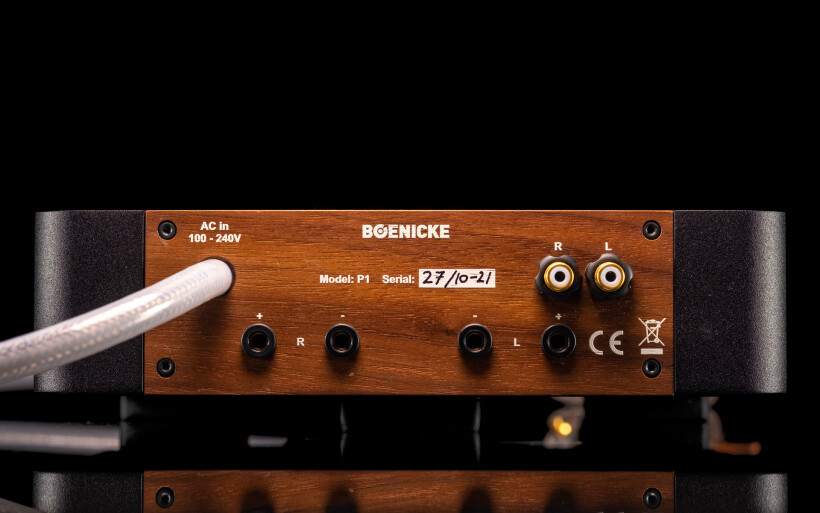 As per usual, the Innuos Statement sent data to the Pacific DAC connected to Trilogy’s 915R pre that simultaneously went into the p1 loaner via Boenicke Audio IC3 CG RCAs and 995R monos via XLRs, both constantly engaged. After each back and forth I had to reconnect speaker cables and adjust volume on the preamp by 7dB. Boenicke Audio W11 SE+ speakers were the ideal load for today’s assignment. They’re less notorious than their W8 siblings yet still not exactly easy types to drive.
As per usual, the Innuos Statement sent data to the Pacific DAC connected to Trilogy’s 915R pre that simultaneously went into the p1 loaner via Boenicke Audio IC3 CG RCAs and 995R monos via XLRs, both constantly engaged. After each back and forth I had to reconnect speaker cables and adjust volume on the preamp by 7dB. Boenicke Audio W11 SE+ speakers were the ideal load for today’s assignment. They’re less notorious than their W8 siblings yet still not exactly easy types to drive.
Since Boenicke Audio p1 was tailored to complement Boenicke speakers, some commentary on them won’t hurt. I’ve reviewed W11 SE, had W8 and W5 with silver Fountek widebanders and now have W11 SE+ and W5 with these drivers upscaled and in white. All these speaker sets are insensitive low-Ω types particularly fond of muscle amps with low output impedance that translates into high damping factor. Although these properties keep a connected load well-controlled and aren’t unusual by any means, I find them situational and counter-productive every now and then. Purist full-range specimens rear-loaded with folded horns fronted by a bossy amp will produce shallow dry bass, while Sven’s designs held captive by such hardware become staging monsters that slam hard, are very agile and fully engaged upstairs. Let me stress that these speakers truly thrive on power, high damping and the resulting control, so just the stuff class D amps inherently have plenty of. The man’s p1 isn’t any different on this front. In fact, its high mechanical compliance with my Boenicks was a dead cert long before any auditions. If it were a 10wpc type with OTL-like output impedance, this review wouldn’t have happened considering the speaker lot at my disposal.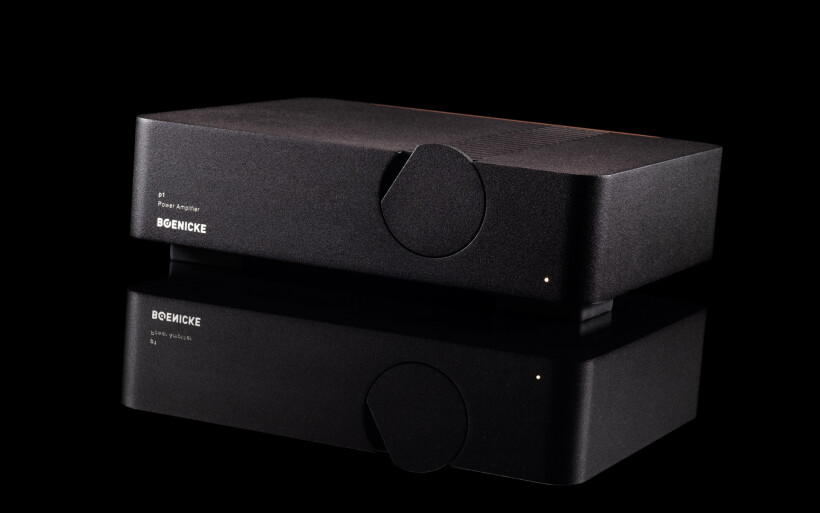 Boenicke speakers assisted by a matched amp morph into radiant resolved quick performers with deep fierce bass and well-pronounced top end, so specimens voiced oppositely to most Harbeths, Spendors, Xavians and any other speaker geared for mid-centric charm and the associated spatial closeness. Knowing this, I had some idea how the p1 potentially might’ve sounded like. Since neither my W5 nor W11 SE+ are densely profiled performers, I suspected that this amp had to boost them in this regard. All the noise-trimming tweaks inside it elevate spatial blackness, magnify details, extend tonal palette and increase its saturation. On top of that, in his own review Srajan filed this tiny deck as a lite class A type. That particular observation had me a touch pre-biased. Then again, I also had my own tools, reference points and ears to rely on. Either way, my expectations about today’s black box were high. It’s a Boenicke after all.
Boenicke speakers assisted by a matched amp morph into radiant resolved quick performers with deep fierce bass and well-pronounced top end, so specimens voiced oppositely to most Harbeths, Spendors, Xavians and any other speaker geared for mid-centric charm and the associated spatial closeness. Knowing this, I had some idea how the p1 potentially might’ve sounded like. Since neither my W5 nor W11 SE+ are densely profiled performers, I suspected that this amp had to boost them in this regard. All the noise-trimming tweaks inside it elevate spatial blackness, magnify details, extend tonal palette and increase its saturation. On top of that, in his own review Srajan filed this tiny deck as a lite class A type. That particular observation had me a touch pre-biased. Then again, I also had my own tools, reference points and ears to rely on. Either way, my expectations about today’s black box were high. It’s a Boenicke after all.
Boenicke Audio p1 connected to the W11 SE+ instantly introduced itself as voiced oppositely to what its small footprint implied. The Swiss team sounded downright ballsy, spatially mighty, superbly developed downstairs, exceptionally feisty, elastic and slamming in an enjoyably brutal crackling way. This wasn’t a surprise in the slightest, but the predictable result of my daily floorstander set managed by a spot on amp companion for it. What had me off guard still was how juicy, texturally generous, internally moist, anchored and warm the p1 was at the same time. Most audio products lean towards either quickness, resolution and sun at a cost of lesser color intensity and weight, or are warm, grounded and atmospheric yet not exactly quick, open and illuminated. This time around however I got sensible power and unusually firm drive on top of features that naturally elevate tone, heft and saturation, which was quite the achievement by my standards. As such the p1 stood defiant against its own kind. Nothing about its sound struck me as pale, prickly, sharp, excessively mechanical or dull.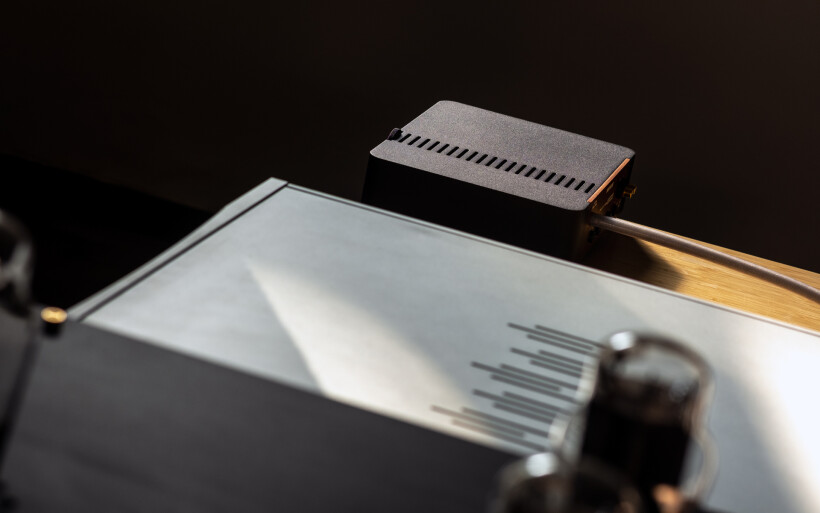 It’s no news that opposite sonic profiles attract one another and form synergistic couples. Sven’s speakers are spatially liberated hi-res types, while most his other designs I’ve heard prioritize aspects from the other end of the spectrum. That said, the more I’ve auditioned the p1 in my setup, the more sense its tuning had. It’s one thing that for speakers such as W11 SE+ it was just the right fit, but in my use case scenario I’ve found nothing to complain about given its asking price. High power, damping and mass served all at once are the well-tested recipe for success with products the Boenicke house is the most known for. On that note, most mails sent my way are those with questions about amps for its W5, W8 or W11. I’m fairly frequently asked whether push-pull tube affairs with KT88 or KT120 glass are sufficient. ‘It depends’ is my usual reply that possibly grows more specific if extra info is provided. From this point onwards in case of any such inquiries I’ll politely suggest reading about the small yet bold p1. It truly has what it takes to brilliantly complement either Boenicke speaker set listed, period.
It’s no news that opposite sonic profiles attract one another and form synergistic couples. Sven’s speakers are spatially liberated hi-res types, while most his other designs I’ve heard prioritize aspects from the other end of the spectrum. That said, the more I’ve auditioned the p1 in my setup, the more sense its tuning had. It’s one thing that for speakers such as W11 SE+ it was just the right fit, but in my use case scenario I’ve found nothing to complain about given its asking price. High power, damping and mass served all at once are the well-tested recipe for success with products the Boenicke house is the most known for. On that note, most mails sent my way are those with questions about amps for its W5, W8 or W11. I’m fairly frequently asked whether push-pull tube affairs with KT88 or KT120 glass are sufficient. ‘It depends’ is my usual reply that possibly grows more specific if extra info is provided. From this point onwards in case of any such inquiries I’ll politely suggest reading about the small yet bold p1. It truly has what it takes to brilliantly complement either Boenicke speaker set listed, period.
If AGD Productions amps reside in the quick open informational corner, S.P.E.C. hardware locates in the exact opposite realm and Aavik machines are in the middle, the Japanese company shares its warm tonally gifted space with Boenicke Audio p1. Without comparing RSA-M99 and the Swiss I can’t know how much their profiles overlap, but the former with the W11 SE+ was thick, round, fast and smooth enough to nicely mimic the general class A aroma. Since Trilogy 995R hybrid monos are so biased up to 55wpc, the p1 naturally had to fight with these. What a battle this was!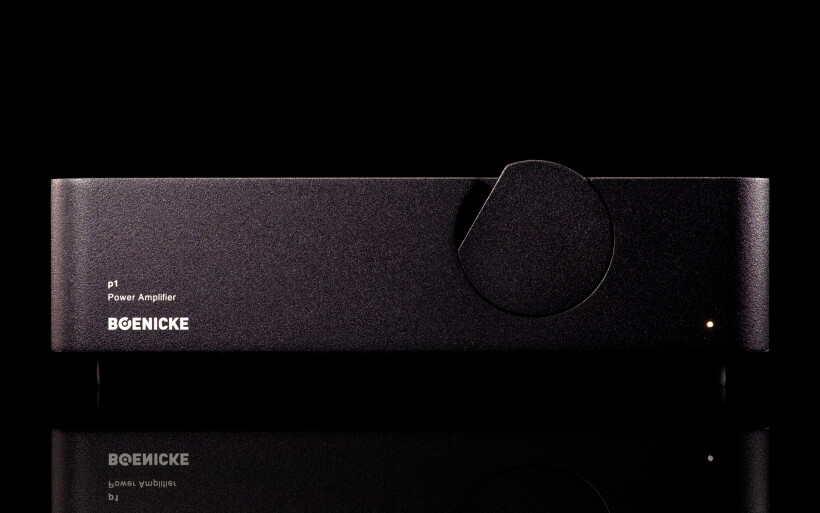 The most prominent difference between twin 99R towers and p1 was in their execution of bass. In spite of the latter’s denser, fuller, rounder and more hooded profile from the bottom to the very top, it was clearly snappier, more thunderous, immediate and controlling downstairs. Usually it’s the other way around, but the Swiss’ six times higher horsepower and far lower output impedance had my W11 SE+’s woofers in a far tighter grasp. With this particular load the newcomer felt more powerful, instant and gifted all in all, so clearly was the better fit. Although on that score Trilogy’s monos were more relaxed, slimmer and a touch lazy even, above bass they had their revenge. These behemoths aren’t class A wannabes but proper representatives of the breed that had the upper hand on outline specificity and internal pigmentation of all spatial projections. Trilogy’s analog end was the less warm and dense of the two yet still sensibly fruitier, more sonorous, vibrant, euphonic and also accurate. All its virtual frames were utmost pleasing to the eye and portrayed in a more distinct sunnier fashion in effect, while top end shimmers felt weightier, lingered in air for longer and there were more of them. To simplify, the p1 wasn’t as resolved and exquisite as the Brit, but exceptionally smooth nonetheless. That was the cool thing about this tiny amp. It simply didn’t know how to go overboard into excess sharpness no matter what was on my playlist. With investigative sunny speakers such as W11 this actually was beneficial.
The most prominent difference between twin 99R towers and p1 was in their execution of bass. In spite of the latter’s denser, fuller, rounder and more hooded profile from the bottom to the very top, it was clearly snappier, more thunderous, immediate and controlling downstairs. Usually it’s the other way around, but the Swiss’ six times higher horsepower and far lower output impedance had my W11 SE+’s woofers in a far tighter grasp. With this particular load the newcomer felt more powerful, instant and gifted all in all, so clearly was the better fit. Although on that score Trilogy’s monos were more relaxed, slimmer and a touch lazy even, above bass they had their revenge. These behemoths aren’t class A wannabes but proper representatives of the breed that had the upper hand on outline specificity and internal pigmentation of all spatial projections. Trilogy’s analog end was the less warm and dense of the two yet still sensibly fruitier, more sonorous, vibrant, euphonic and also accurate. All its virtual frames were utmost pleasing to the eye and portrayed in a more distinct sunnier fashion in effect, while top end shimmers felt weightier, lingered in air for longer and there were more of them. To simplify, the p1 wasn’t as resolved and exquisite as the Brit, but exceptionally smooth nonetheless. That was the cool thing about this tiny amp. It simply didn’t know how to go overboard into excess sharpness no matter what was on my playlist. With investigative sunny speakers such as W11 this actually was beneficial.
If the p1’s undisputed advantage over 995Rs was on bass, these monos had my vote on the overall sensation of vividness and seductiveness. Their spatial projections closer to my seat naturally were larger and more intimate. On that score the p1’s key sound sources were more distant so not quite as tall and spaced out on a less enveloping backdrop. I imagine that some listeners could’ve even fancied that uniform less surrounding approach more. It enlarges the entire perspective to net the live gig effect experienced from afar and as such has its own appeal. Still, I enjoy aural bubbles and their critical renders served so close and personal that I can almost touch them. Trilogy’s set does this at no loss of oxygen in-between, around and behind these shapes. That’s one of the main reasons why it struck me as the more vivid and all in all higher-tiered more posh contestant. However, the 7x more affordable p1 managed to accomplish an awful lot in my listening room still. The thing is, it did so well on bass, timing, color, spatial grandeur and overall sonic ease that I honestly didn’t miss my monos. The Swiss’ clear edge on the sheer amount of air pushed my way provided a different sort of excitement I’m used to, but as valid and bloody enjoyable nonetheless. That said, in spite of its lower retail price the p1 with W11 SE+ sounded different than my twin 995Rs yet wholesome and very nicely balanced all in all. That wasn’t the first time when high-level synergy cast financial differences aside. More importantly, the p1 is Sven’s entry-level amp effort, so I can’t wait what he did one notch higher in that pipeline.
Today the list of high-performance class D amps I’d recommend got longer. Boenicke Audio p1 belongs there just as hardware by Aavik, AGD and S.P.E.C I’ve reviewed. Interestingly, the Swiss is the most affordable and powerful from this lot. It’s also barely warm, adorably compact, dressed to impress and voiced to brilliantly support Boenicke speakers without charging an arm and leg. Since I own two, that’ll do it for me. Individuals after an amp for their W5, W8 or W11 should audition Sven’s petite p1 prior to anything else. It’ll really work wonders with any of these. That’s a promise!
Associated Equipment:
- Amplifier: Trilogy 995R, FirstWatt F7, Enleum AMP-23R
- DAC: LampizatOr Pacific (KR Audio T-100 / Living Voice 300B + KR Audio 5U4G Ltd. Ed.)
- Speakers: Boenicke Audio W11 SE+, sound|kaos Vox 3afw
- Transport: Innuos Statement, fidata HFAS1-S10U, Aavik S-180
- Preamplifier: Trilogy 915R, Thöress DFP
- Speaker cables: Boenicke Audio S3, LessLoss C-MARC
- Headphones: HifiMan Susvara
- Speaker signal conditioning: LessLoss Firewall for Loudspeakers, Boenicke ComDev
- Anti-vibration conditioning: 12x Carbide Audio Carbide Bases (under DAC, preamp and speakers)
- Interconnects: LessLoss Entropic Process C-MARC, Boenicke Audio IC3 CG
- Power components: Gigawatt PC-3 SE EVO+/LC-3 EVO, LessLoss C-MARC, LessLoss Entropic Process C-MARC, Boenicke Audio Power Gate, ISOL-8 Prometheus
- USB components: iFi audio Mercury3.0
- Rack: Franc Audio Accesories Wood Block Rack 1+3
- Network: Fidelizer EtherStream, Linksys WRT160N
- Music: NativeDSD
Retail prices of reviewed components in EU (incl. tax):
- Boenicke Audio p1 (black/silver): CHF 4’279/4’524
Retail prices of reviewed components in Switzerland:
- Boenicke Audio p1 (black/silver): CHF 3’663/3’919
Manufacturer: Boenicke Audio


